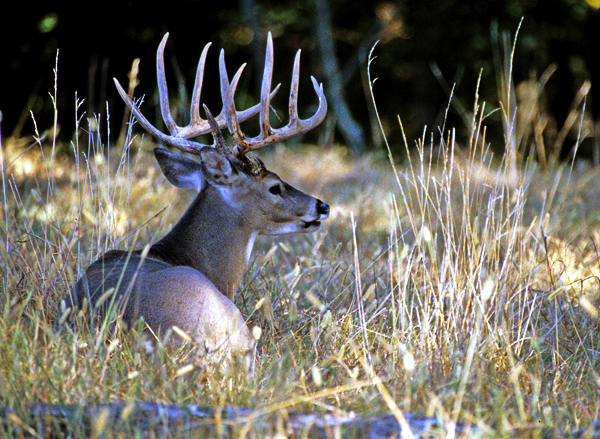By Art Lander Jr.
FRANKFORT, Ky. – When Kentucky’s 2012-2013 deer season opens with the beginning of archery hunting Sat., Sept. 1, there will be plenty of reasons for hunters to be optimistic.
Last deer season was arguably the state’s best ever. A record 68 bucks taken in Kentucky qualified for entry into the Boone & Crockett record books, a record for the state.

Kentucky hunters also posted the fourth best overall harvest with119,656 deer, the highest total since the 2008-09 season. In 96 of Kentucky’s 120 counties, hunters bagged more deer than in the 2010-2011 deer season.
“If you manage with an eye toward overall herd quality, the trophies will come,” said Tina Brunjes, deer and elk program coordinator for the Kentucky Department of Fish and Wildlife Resources.
Good habitat, aggressive doe harvest and the one-buck limit are thought be the main reasons why Kentucky has developed a quality deer herd with ample hunting opportunities in all 120 counties.
The trophy deer taken in Kentucky last season included 52 bucks with typical antlers scoring 160 or higher and 16 bucks with non-typical antlers scoring 185 or higher. The deer came from 44 different Kentucky counties: from Fulton County in the west to Pike County in the east. A decade ago, Kentucky produced just 34 Boone & Crockett record book deer.
Weather, one factor that biologists can’t control, often has a big impact on how many deer are available to hunters and how many are harvested.
It’s too early to fully assess the impact of this summer’s drought, which has affected about two-thirds of the state. “Early on we had good conditions for fawning. The spring was warm and wet, with lush undergrowth,” said Brunjes. “But drought conditions may have compromised mast production and the availability of green forage in some areas.”
The Aug. 14 Drought Monitor issued by the National Weather Service categorized the Jackson Purchase Region of Kentucky and parts of 18 counties directly to the east of that region in exceptional or extreme drought. Central Kentucky counties range from moderate drought to abnormally dry, but parts of more than 35 southern and eastern Kentucky counties have received normal rainfall levels.
Brunjes speculated that if the dry conditions persist in western Kentucky, it could impact the deer harvest there. “A poor mast crop compounded by corn and soybean fields shriveled up would put deer on the move looking for food. That could mean harvest totals will be higher than usual,” she said.
In parts of central and eastern Kentucky that have received near-normal rainfall levels, Brunjes encourages landowners to continue pre-season mowing of their hunting areas. “Even though our fields are dry, there’s still a lot of clover out there,” said Brunjes. “August is a good time to cut back the dead grass, to stimulate re-growth.”
Clover, a cool season legume, is an important food source for deer until heavy frosts come in late October. There’s plenty of time left for rains to benefit clover fields.
Pre-season mowing should also include cutting trails and wildlife openings in your hunting area. “You need to be able to easily and quietly get to your treestand or ground blind, and you need to be able to see. In some areas the weeds are really tall this year,” she said.
Kentucky’s deer herd is now estimated to number about 850,000, down from one million in 2003. “Our herd is now stable,” said Brunjes. “A stable herd is a robust herd that can withstand drought and other big changes in weather and food availability.”
Although yellow or brown grass covers much of Kentucky, hunters should have many deer available to them when they hit the woods this fall.
Author Art Lander Jr. has been writing about the outdoors since the 1970s. He is a staff writer for Kentucky Afield Magazine.
-30-
The Kentucky Department of Fish and Wildlife Resources manages, regulates, enforces and promotes responsible use of all fish and wildlife species, their habitats, public wildlife areas and waterways for the benefit of those resources and for public enjoyment. Kentucky Fish and Wildlife is an agency of the Tourism, Arts and Heritage Cabinet. For more information on the department, visit our website at fw.ky.gov.


Be the first to comment